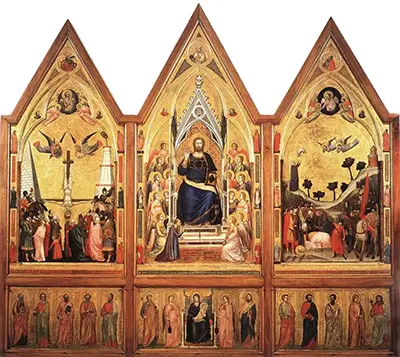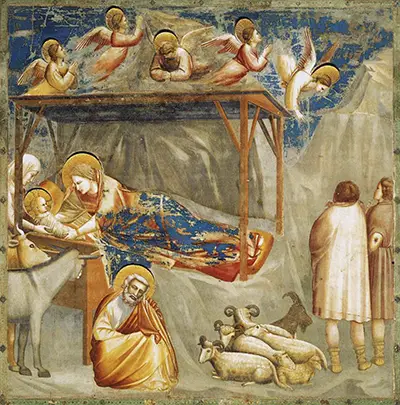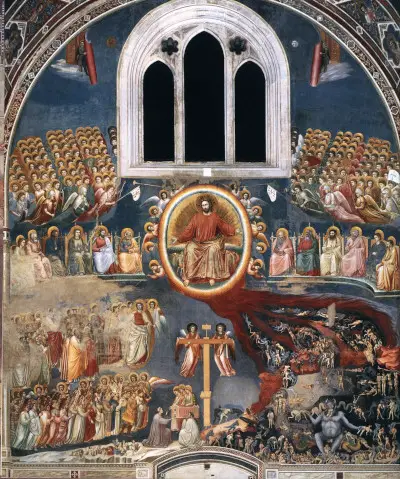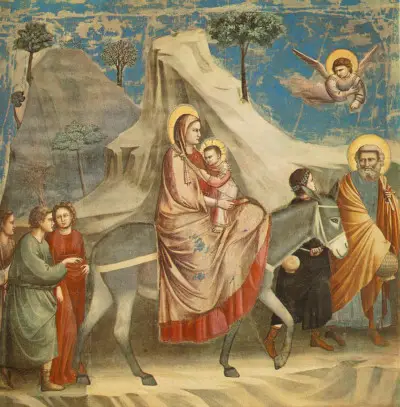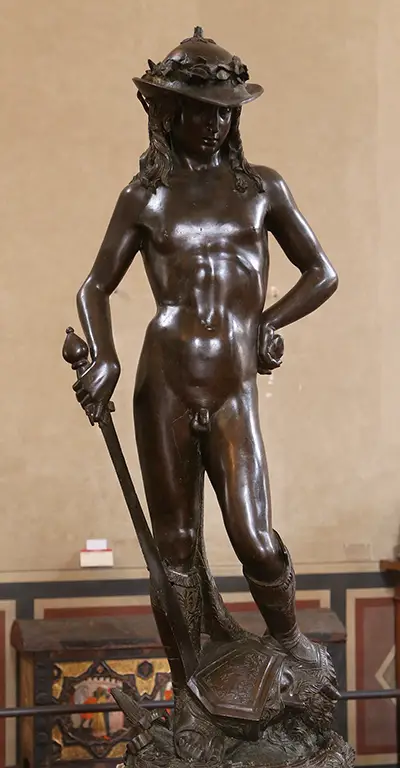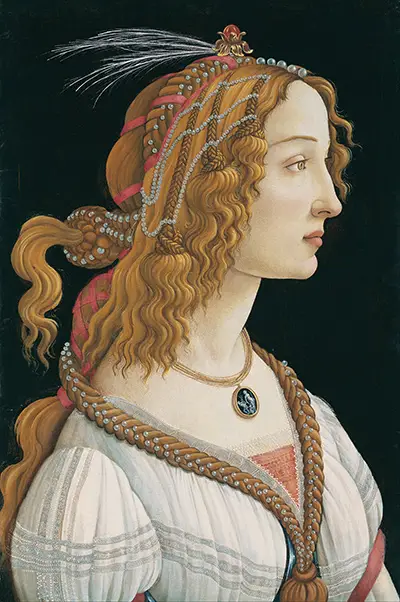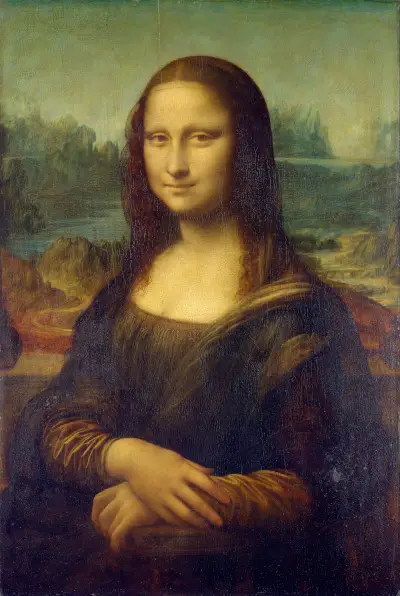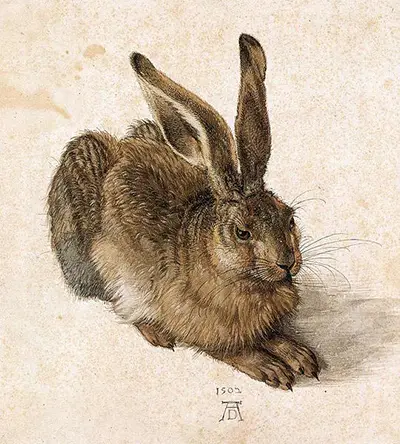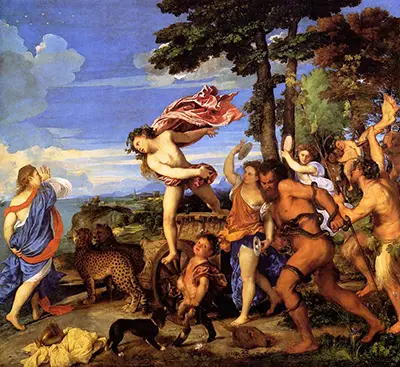Annunciation to Saint Anne was part of Giotto’s work for the Scrovegni Chapel and specifically refers to a passage from the life of Joachim.
The Story of St Anne
The Annunciation to St Anne tells us of when Anne is informed by a flying angel that she will soon give birth, through a miraculous conception. We can see these two figures in the large part of the building on the right hand side within Giotto’s work.
Description of the Painting
The angel pokes their head in through an opening on the wall, whilst Anne is seen kneeling close by, perhaps in prayer hoping to hear such news. She is dressed in a bright pink outfit, with pleats which Giotto takes time to accurately depict.
A curtain hangs to her left hand side, which might hold some symbolic value, and the artist then adds some additional items of furniture elsewhere in the room. A further figure can be seen sitting outside, just beneath the balcony - this is likely to be a maid spinning. The artist opens up the building by removing the wall directly facing us, allowing us to peek inwards just as we might with a child’s model house.
Style of the Work
Giotto used plenty of bright tones for this piece, though it is likely that Annunciation to Saint Anne would have been restored several times in order to keep it looking its best - much of Giotto’s work would not have survived to the present day without serious preservation, particularly in the case of his bright colors which would otherwise have faded considerably.
The reason for the domestic setting, with household items, is to give the impression of an intimate setting, which is increased by the use of lighting within the main room and also the maid who attentively sits close by.
Qualities of the Painting
Giotto was highly skilled in architectural painting and clearly enjoyed using these talents, regularly filling backgrounds with elements of walls, rooms, arches and more. We see the same again here, with several rooms opened up to the viewer, as well as sculptured elements around the roof and shading at the back of the building.
Whilst there are fewer figures in this piece than in other parts of the Joachim series, we still can appreciate Giotto’s work, and this was a necessary skill for someone who regularly focused on groups of people from religious tales.
Conclusion
St Anne was an important element to Christian teaching and Giotto was keen to include her within his series on the life of Joachim. We can learn much from this example of how Giotto worked with architecture in his scenes, as well as his use of angels who often held great significance to his paintings.
Visitors to the Scrovegni Chapel will be able to track the life of Joachim through these interconnected stories, capturing key moments from his life. The artist would have spent considerable time in the planning phases, with so many different inspirational stories to pick from within The Bible. Indeed, this series was to become regarded as one of his finest.
More Renaissance Artists




 Giotto.jpg)
 Giotto.jpg)
